Binaural audio is an advanced sound technique that captures the essence of human hearing in a way that conventional stereo audio cannot.
It can create immersive soundscapes, enhance spatial awareness in music, and even influence psychological states.
Aside from being a key component in virtual reality and gaming, binaural audio is increasingly being explored in music production.
It has a unique ability to transport listeners to different auditory worlds.
So, as a music producer, it’s important to know all about binaural audio to elevate your tracks and engage your listeners on a deeper level.
And, stay ahead in the evolving world of sound design, of course.
In today’s article, we’ll be breaking down:
- The basics of how binaural audio works ✓
- The science of spatial audio and HRTF ✓
- Differences between binaural and stereo audio ✓
- Technical insights into a binaural microphone ✓
- The role of dummy heads in recording ✓
- Binaural sound’s effects on the brain ✓
- Practical uses in music production and VR ✓
- Incorporating binaural effects in your tracks ✓
- Much more about binaural audio ✓
After reading this article, you’ll have all the answers to “What is binaural audio?”
Plus, be equipped with the knowledge to create captivating sound experiences, use binaural techniques to enhance your music, and produce audio like a professional.
Whether you’re crafting immersive soundscapes for virtual environments or elevating your skills, binaural audio will be a game-changer in your creative process.
So, let’s dive in…
Table of Contents
- How Binaural Audio Works: Breaking it Down
- The Science Behind Binaural Audio
- The Concept of Spatial Audio
- Head-Related Transfer Function (HRTF) Explained
- Differences Between Binaural and Stereo Audio
- The Unique Qualities of Binaural Recordings
- Understanding Binaural Microphones
- Role of Dummy Head in Binaural Recording
- How Binaural Sound Affects the Brain/Human Hearing
- Binaural Audio in Music Production
- Techniques for Incorporating Binaural Effects
- The Role of Binaural Audio in Human Auditory Experience (+ Psychological Effects)
- Bonus: Binaural Beats and Their Impact
- What is Binaural Audio? Final Thoughts
How Binaural Audio Works: Breaking it Down
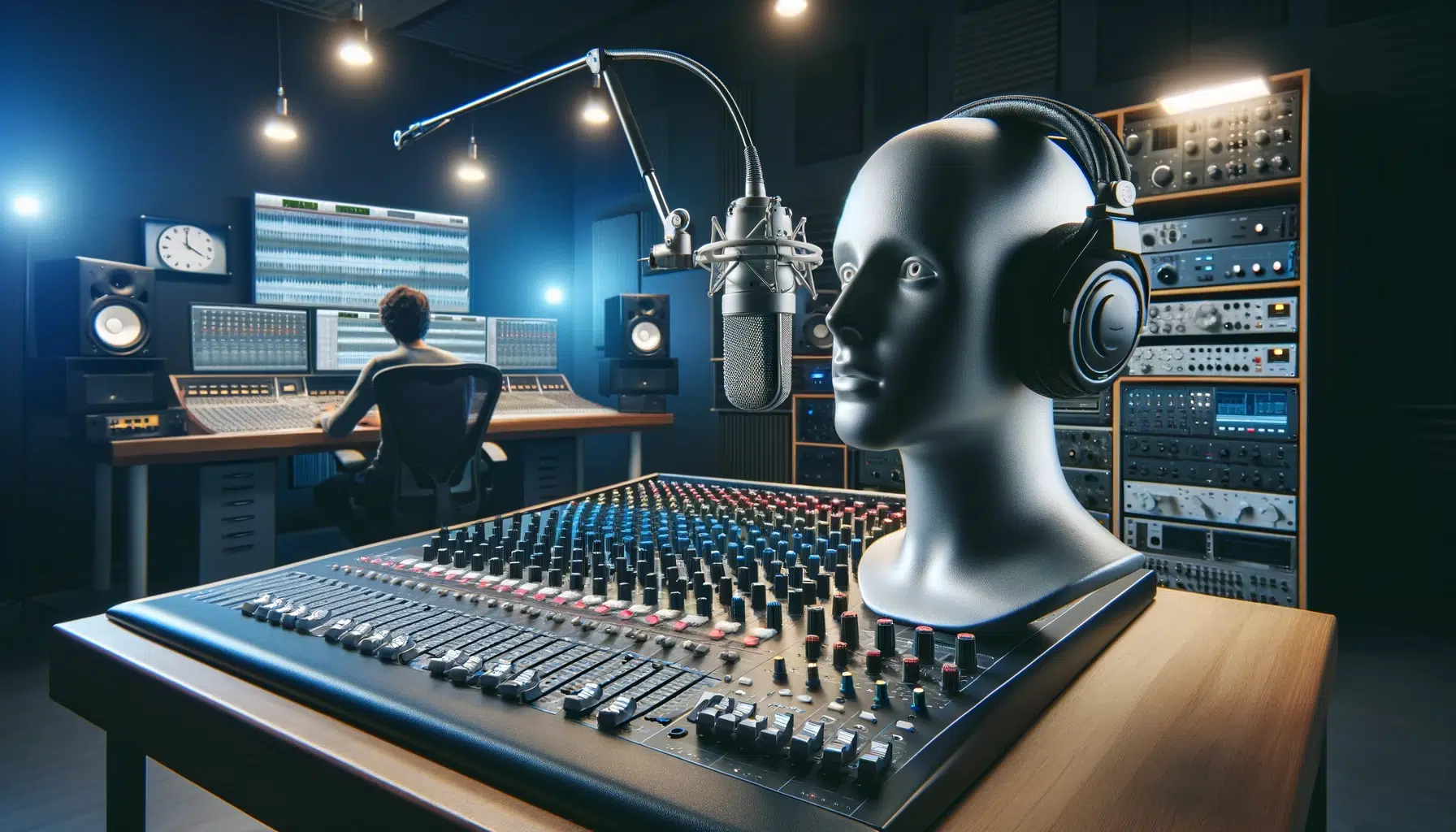
When you ask “What is binaural audio,” you’re entering an immersive world of sound.
Binaural audio captures the natural listening experience by replicating how human ears perceive sound.
This technique uses two audio channels, placing two microphones in each ear of a dummy head or in a configuration that mimics the human head.
The result?… Audio that feels like it’s happening around you, not just to you.
The magic of binaural sound lies in its ability to create a three-dimensional auditory environment.
Unlike traditional stereo audio (which relies on left and right channels) binaural audio captures sound waves as they interact with the human head and ears.
This approach allows listeners, through a simple pair of headphones, to pinpoint sound sources in a way that feels natural and real.
-
Pro Tip: How Binaural Recording Works
Binaural recordings are not just a tool for creating music 一 they’re a bridge to a more profound audio experience.
When you listen to a binaural recording, you’re not just hearing sound; you’re placed inside the soundscape.
This is why binaural audio places you at the heart of the music, making you feel like you’re in the studio with the musicians.
The Science Behind Binaural Audio
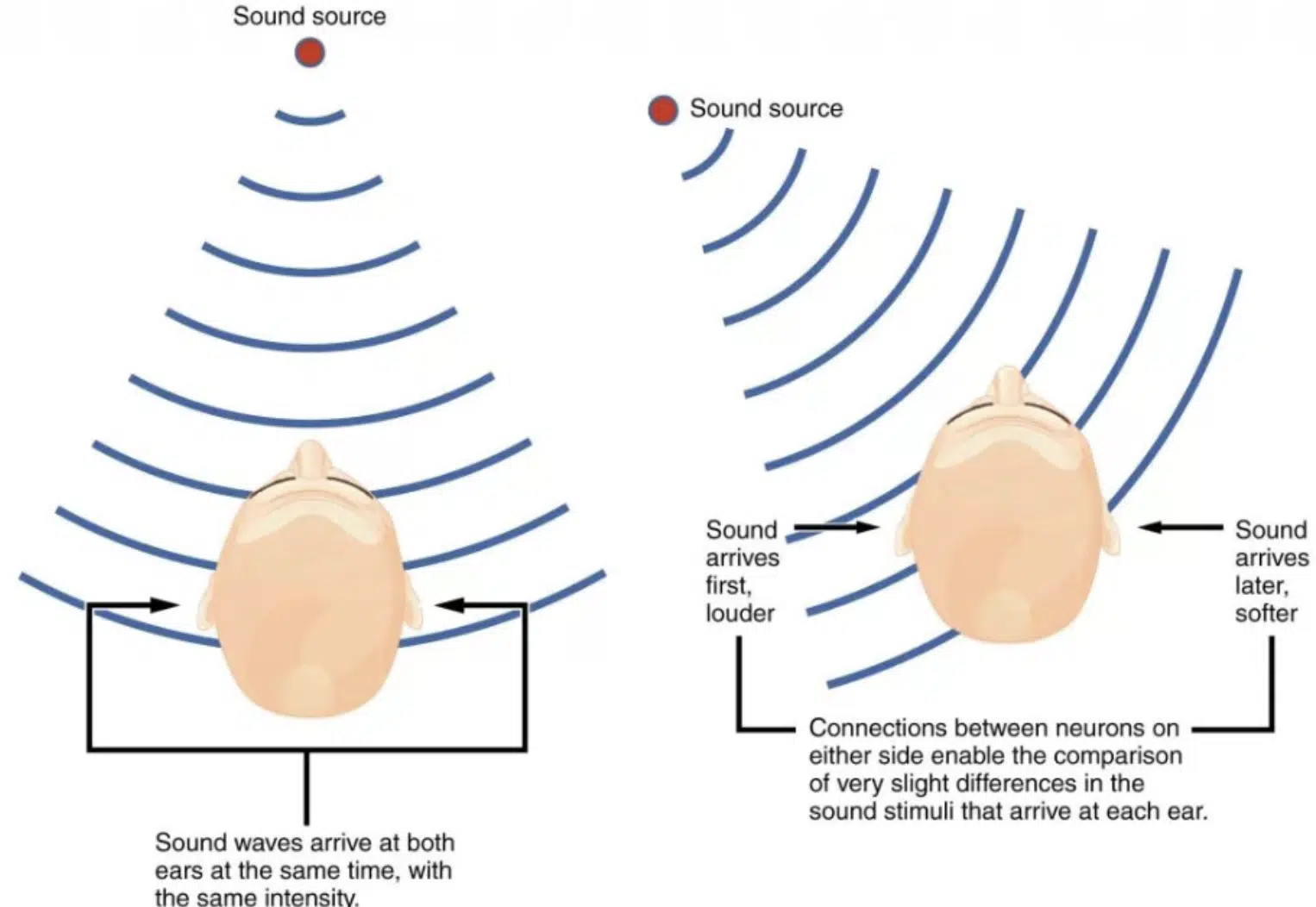
Understanding binaural audio requires delving into the science of human hearing.
Our auditory system is a complex mechanism that processes sound waves from two ears to create a sense of spatial awareness.
Binaural audio exploits this natural process by delivering separate audio signals to each ear 一 creating a perception of depth and location.
This science is not just for sound engineers but for all digital music producers looking to expand their sonic landscapes.
By understanding how binaural sound works, you can create more immersive and emotionally engaging songs.
In turn, harnessing the power of spatial audio to captivate your audience.
The Concept of Spatial Audio
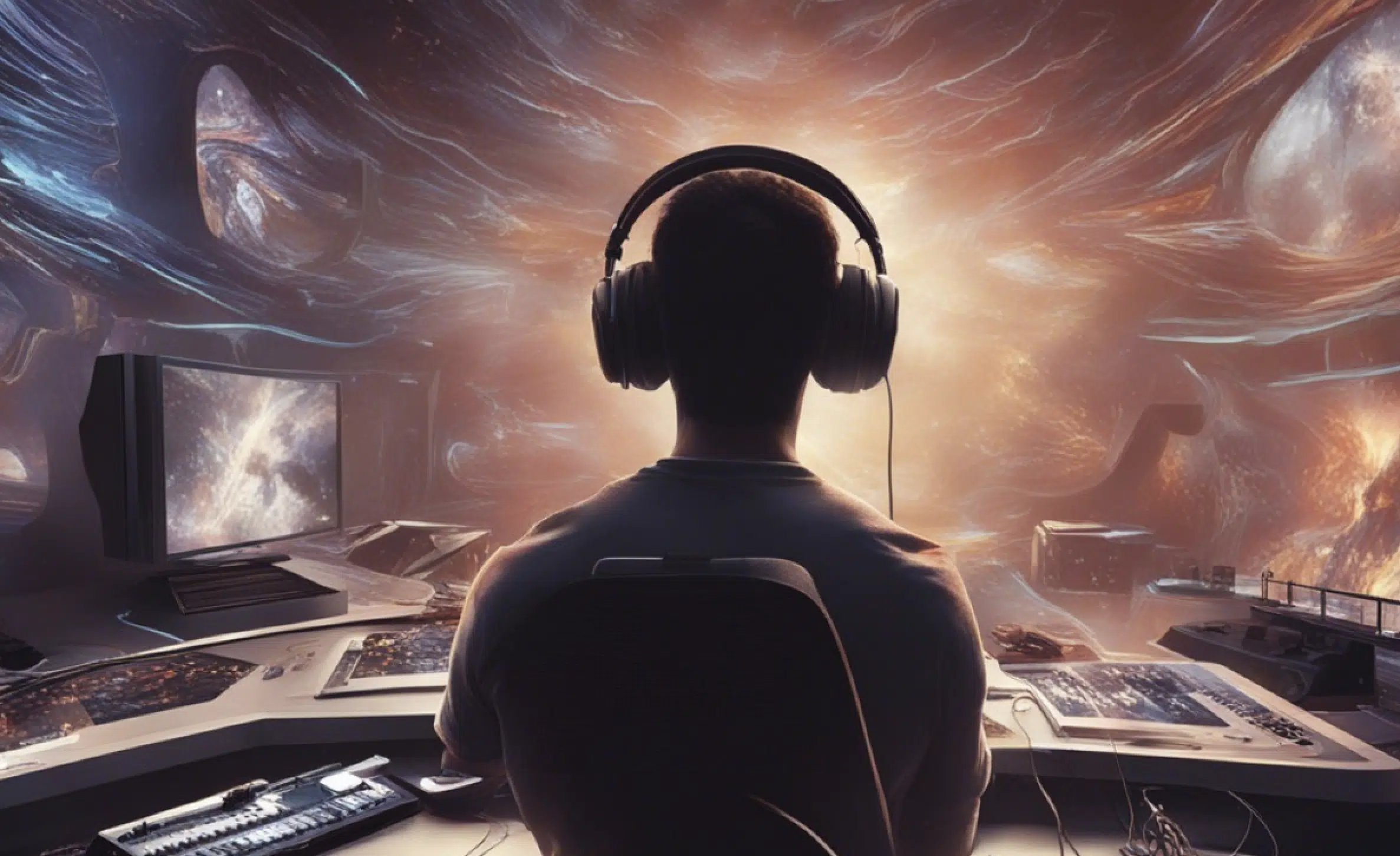
Spatial audio, a cornerstone concept in binaural recordings, is about creating a sound that moves and breathes around the listener.
Unlike stereo audio, which is flat and two-dimensional, spatial audio envelops the listener, giving a sense of movement and location.
This is achieved by manipulating sound waves to mimic how they arrive at our ears (left ear/right ear) in the real world.
For a music producer, mastering spatial audio means unlocking new creative possibilities.
Imagine a track where the sound of a guitar not only comes from the left but moves over to the right, creating a dynamic listening experience…
This is what spatial audio offers 一 an opportunity to create soundscapes that are as vivid and detailed as the real world.
When it comes to a binaural recording, spatial audio is the key to authenticity.
By understanding and utilizing spatial audio techniques, you can transform your music from basic tracks to immersive experiences.
You can literally transport your listeners to a different place and time.
Head-Related Transfer Function (HRTF) Explained
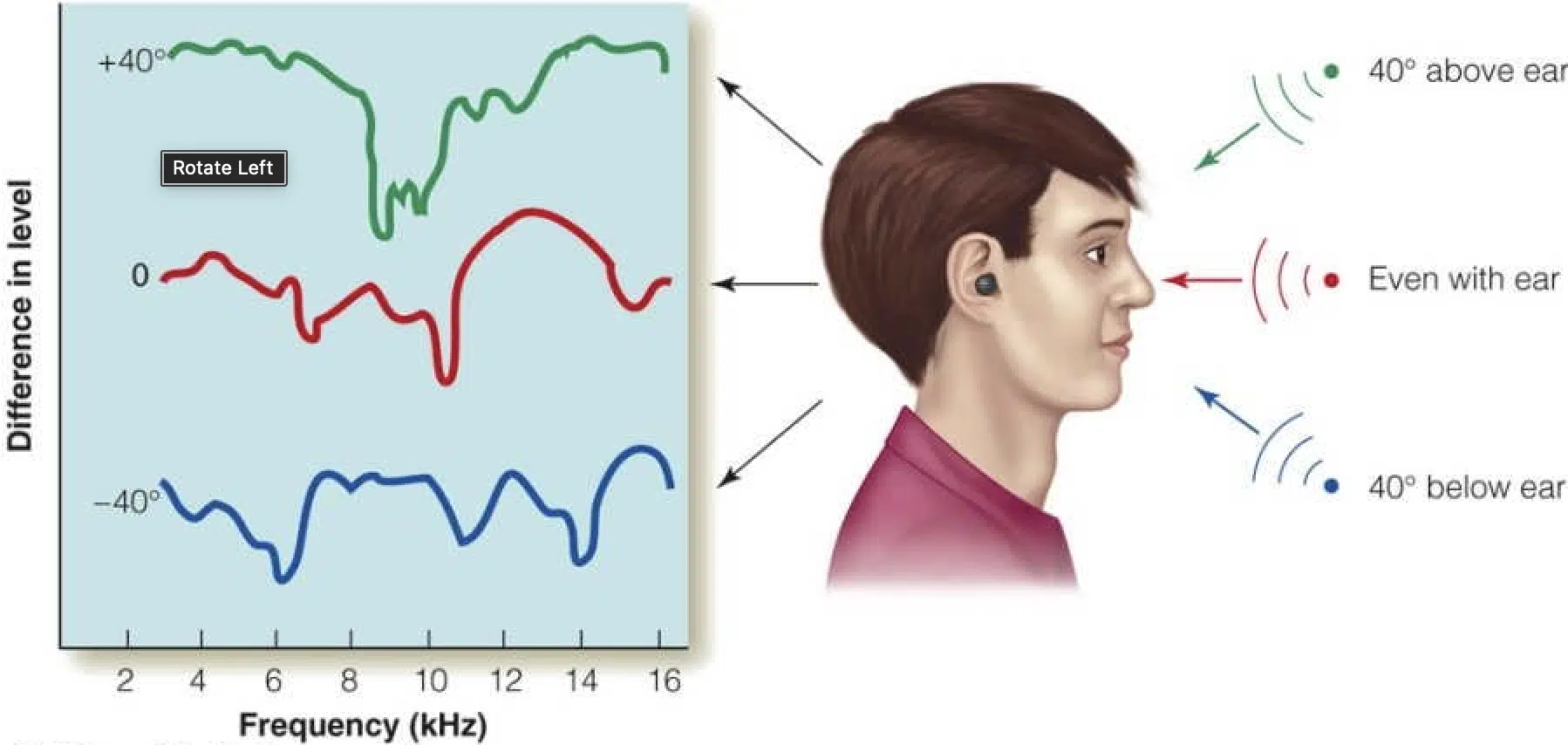
A pivotal element in creating binaural audio is the Head-Related Transfer Function (HRTF).
This function maps out how sound waves interact with the human head and ears 一 affecting how we perceive the direction and distance of sounds.
HRTF is crucial in binaural recording because it helps in simulating how sounds coming from different directions are heard by each ear.
For sound engineers, mixing engineers, mastering engineers, and music producers, understanding HRTF is essential in crafting realistic binaural recordings.
By using Head-Related Transfer Function data, you can create audio that accurately mimics the way sound arrives and is processed by the human ears (left ear/right ear).
This level of detail is what sets binaural audio apart from traditional stereo recordings.
Differences Between Binaural and Stereo Audio
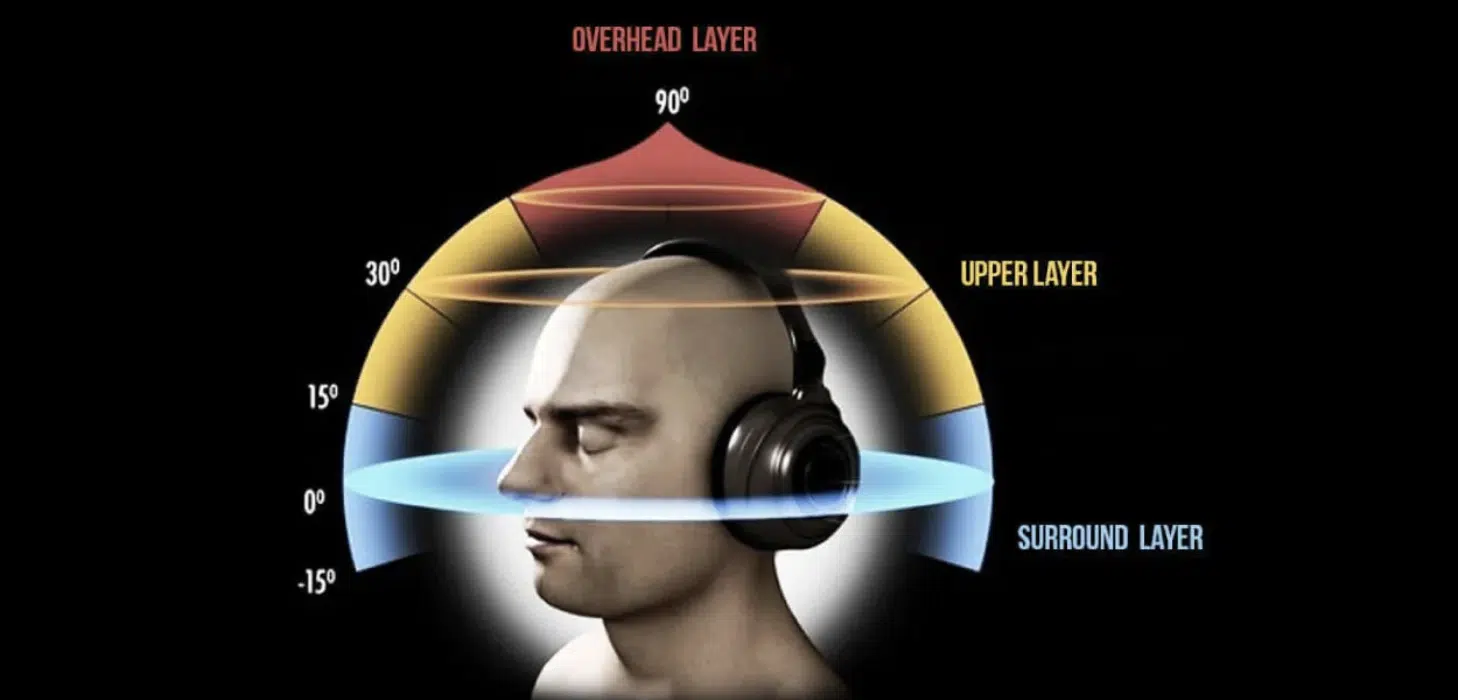
While both binaural and stereo audio use two audio channels, the similarities end there.
Stereo audio splits sound between the left and right channels (creating a sense of width), but it lacks the depth and spatial accuracy of binaural audio.
In stereo recordings, sounds are bound to the left and right speakers or a pair of headphones, like music production heaphones; limiting the listener’s spatial experience.
Binaural audio, on the other hand, captures the way sound interacts with the human head, ears, and the environment.
This approach creates a more natural and immersive listening experience as if you’re physically present in the sound’s environment.
Binaural recordings make use of the tiny delays and frequency changes that occur as sound waves wrap around the head and interact with the ears.
This offers a more realistic soundstage.
- Binaural audio 一 Is great if you’re looking to create a more immersive or intimate audio environment.
- Stereo audio 一 Remains a great option for traditional mixes where spatial depth is less of a priority.
For digital music producers, the choice between binaural and stereo audio depends on the desired listening experience.
Either way, knowing about binaural audio is great if you’re looking to expand your skills, make more legendary music, or break into other sonic fields.
The Unique Qualities of Binaural Recordings
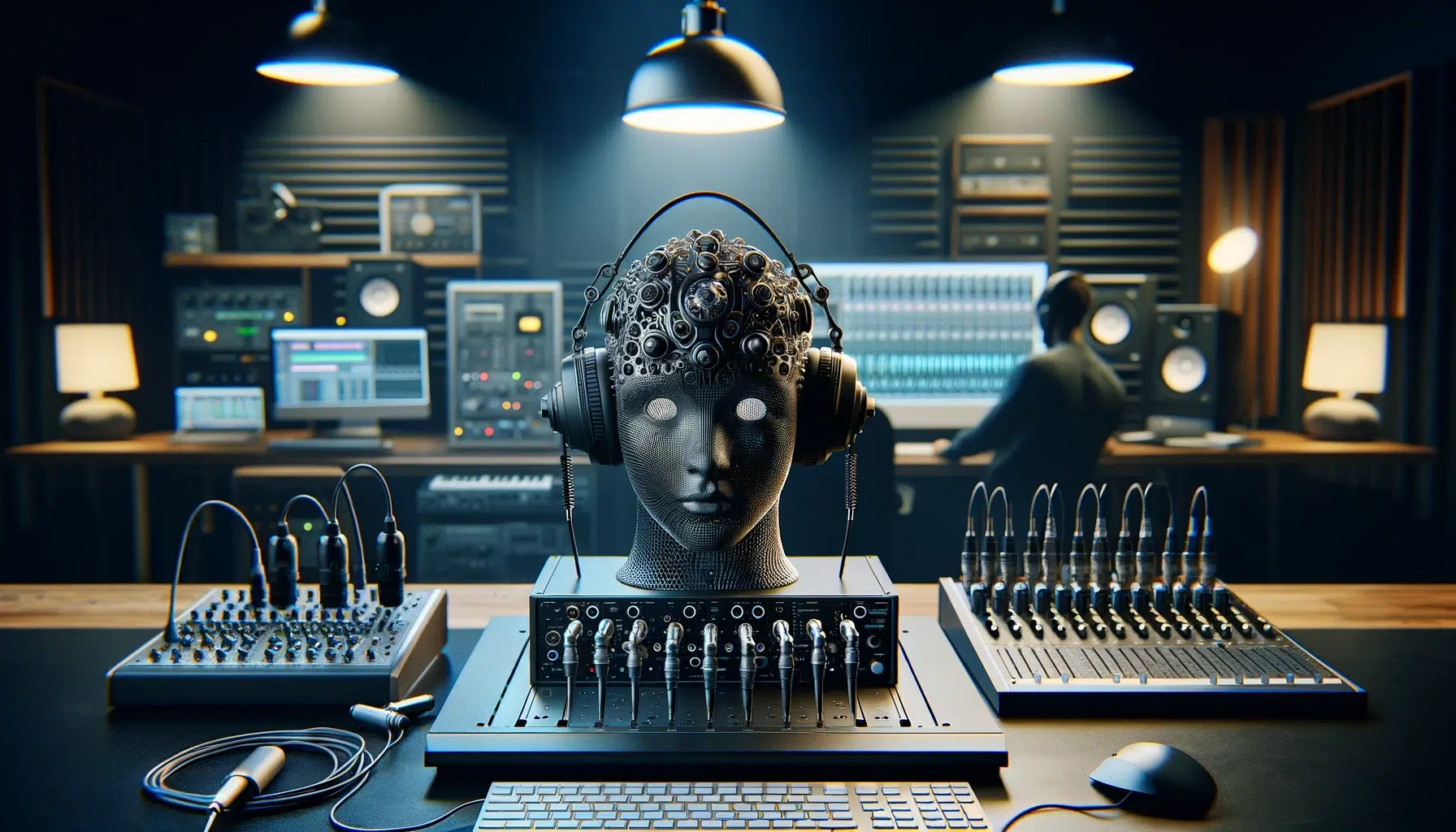
Binaural recordings offer a unique listening experience, distinguished by their ability to replicate the human auditory system.
A binaural audio recording uses binaural mics placed in the ears of a dummy head, or at ear level in space 一 capturing sound as it would naturally reach the human ears.
This method not only records the sound sources but also the acoustic characteristics of the audio environment.
This creates a binaural audio experience that is rich and lifelike.
NOTE: One of the fascinating aspects of binaural sound is its ability to evoke a strong sense of place.
Whether it’s the echo in a cathedral or the buzz in a busy street, binaural recordings capture these nuances, offering an audio snapshot of a location.
For listeners using stereo headphones or stereo speakers, this creates an immersive experience that stereo recordings simply cannot match.
The precision of a binaural recording makes it an invaluable tool in the recording industry, especially when creating soundscapes in virtual reality.
This is because the authenticity of sound is paramount.
By using binaural audio, sound designers and music producers can create environments that are not only heard but also felt.
Therefore, enhancing the overall sensory experience (specifically the autonomous sensory meridian response).
Understanding Binaural Microphones
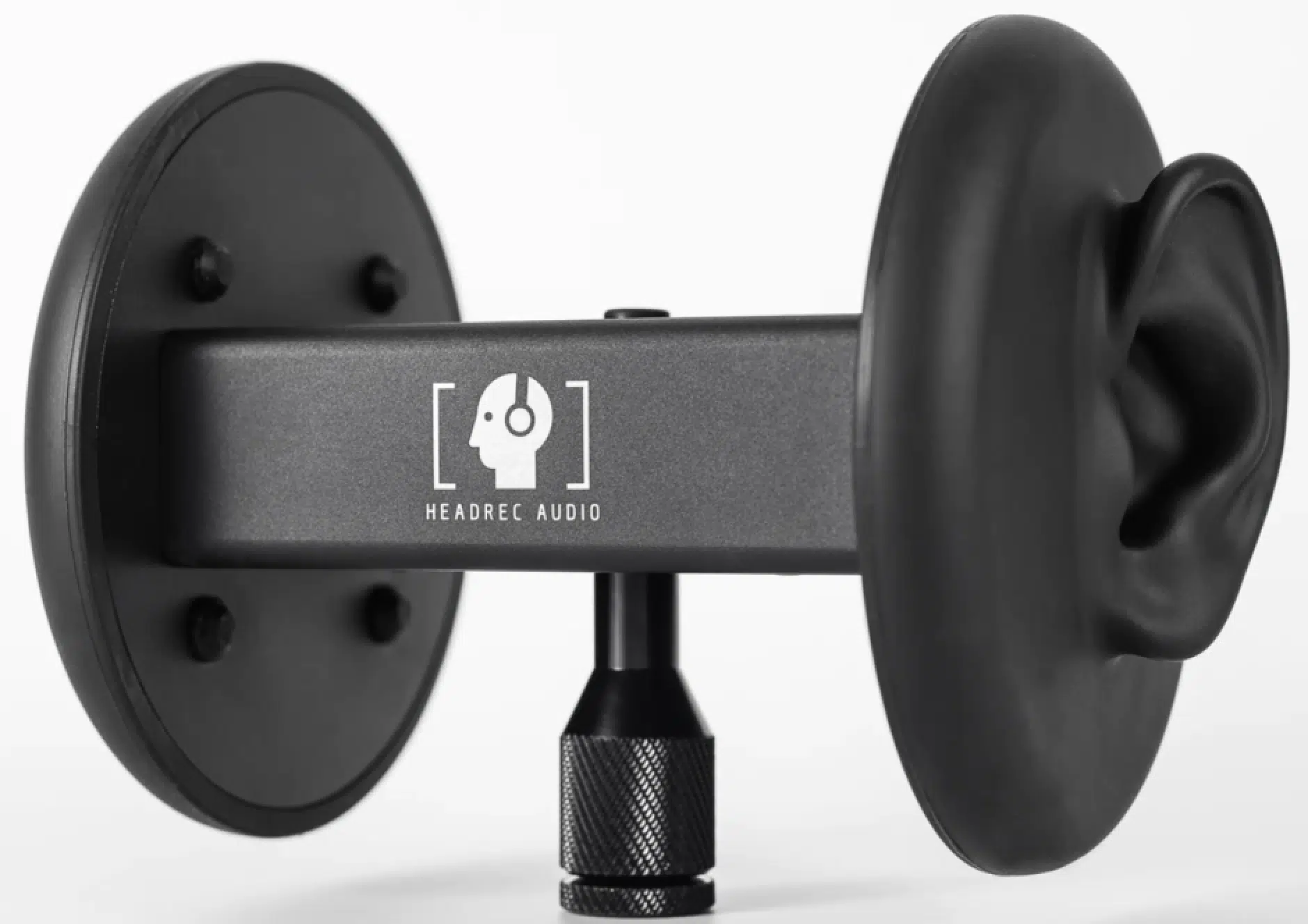
Binaural microphones are central to creating binaural audio.
These specialized mics replicate the position of human ears, capturing sound in a way that reflects how we naturally hear.
Binaural mics often consist of two small microphones placed inside a dummy head’s ears or spaced apart to mimic the distance between human ears.
It ensures that the binaural audio recording captures the subtle differences in sound arrival time and intensity at each ear.
PRO TIP: For digital music producers, a binaural microphone opens up new avenues for capturing natural sound.
Whether recording a live performance or ambient sounds for a track, a binaural microphone provides a level of realism and immersion that standard microphones can’t achieve.
They’re particularly effective in capturing the nuances of sound waves as they travel through different environments.
The choice of binaural microphones can significantly impact the quality of the recording.
High-end models like the Sennheiser Ambeo Smart Headset are designed to capture audio with exceptional clarity and detail.
Conversely, more affordable options can still provide a good starting point for experimenting with binaural audio.
Role of Dummy Head in Binaural Recording
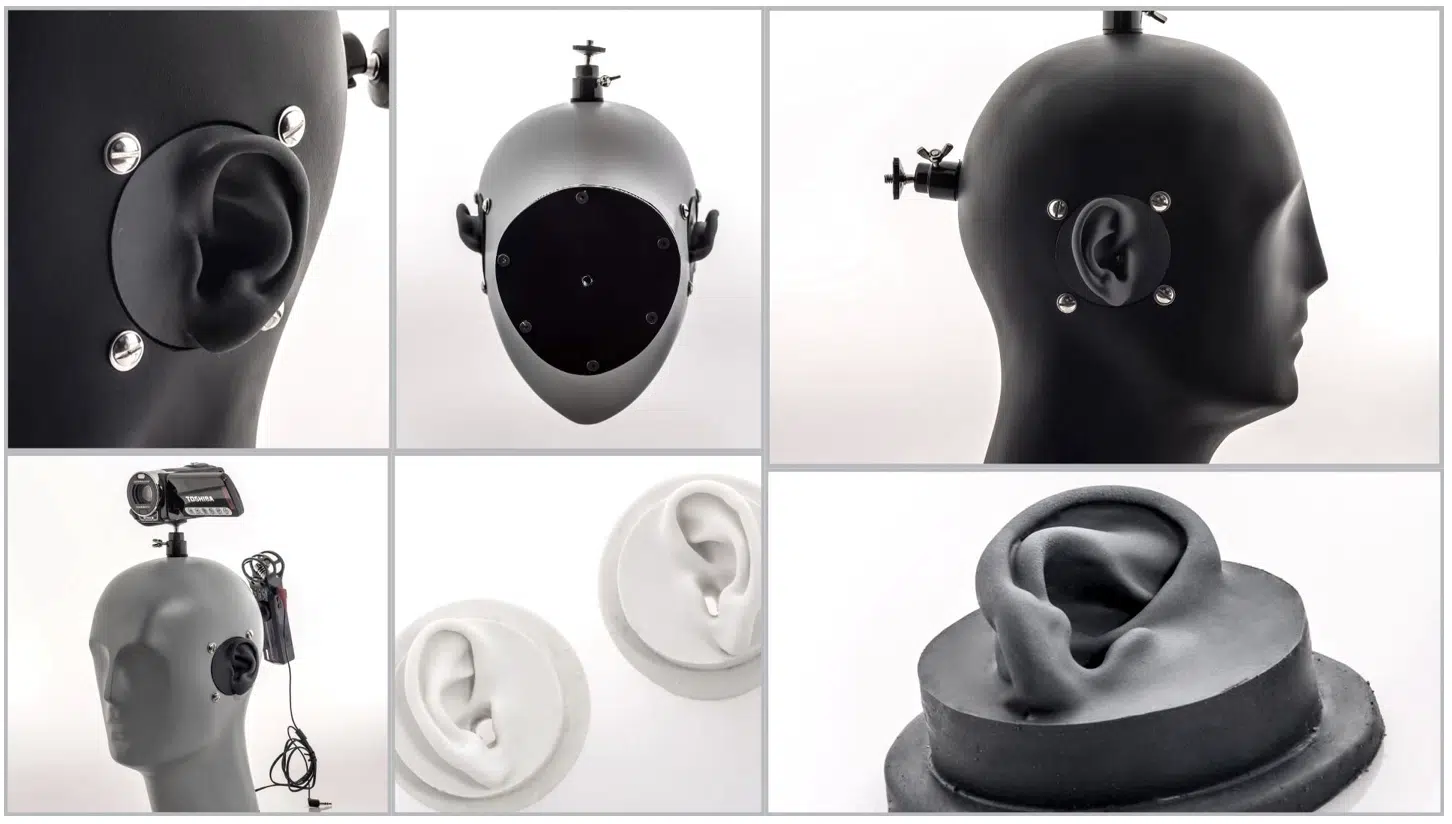
The dummy head, often used in binaural recordings, is more than just a stand-in for the human head.
It’s an essential tool that replicates the way sound interacts with the human head and ears.
Fitted with binaural microphones in its ear canals, the actual dummy head captures sound just as it would be heard by a person.
This includes all the nuances of:
- Spatial audio
- Sound waves
The design of the dummy head is crucial for accurate binaural recordings.
It often includes features that mimic the human head (like ear canals and outer ears) to ensure that the sound captured reflects the natural hearing experience.
This setup is particularly important for creating recordings that will be used in virtual reality or for auditory research, where the accuracy of sound placement is key.
Sound engineers and sound designers often use dummy heads to experiment with different recording techniques.
By placing the dummy head in various environments, they can capture a wide range of binaural audio places, from intimate indoor settings to expansive outdoor scenes.
This versatility makes the dummy head a vital tool in the arsenal of anyone working with binaural audio.
How Binaural Sound Affects the Brain/Human Hearing
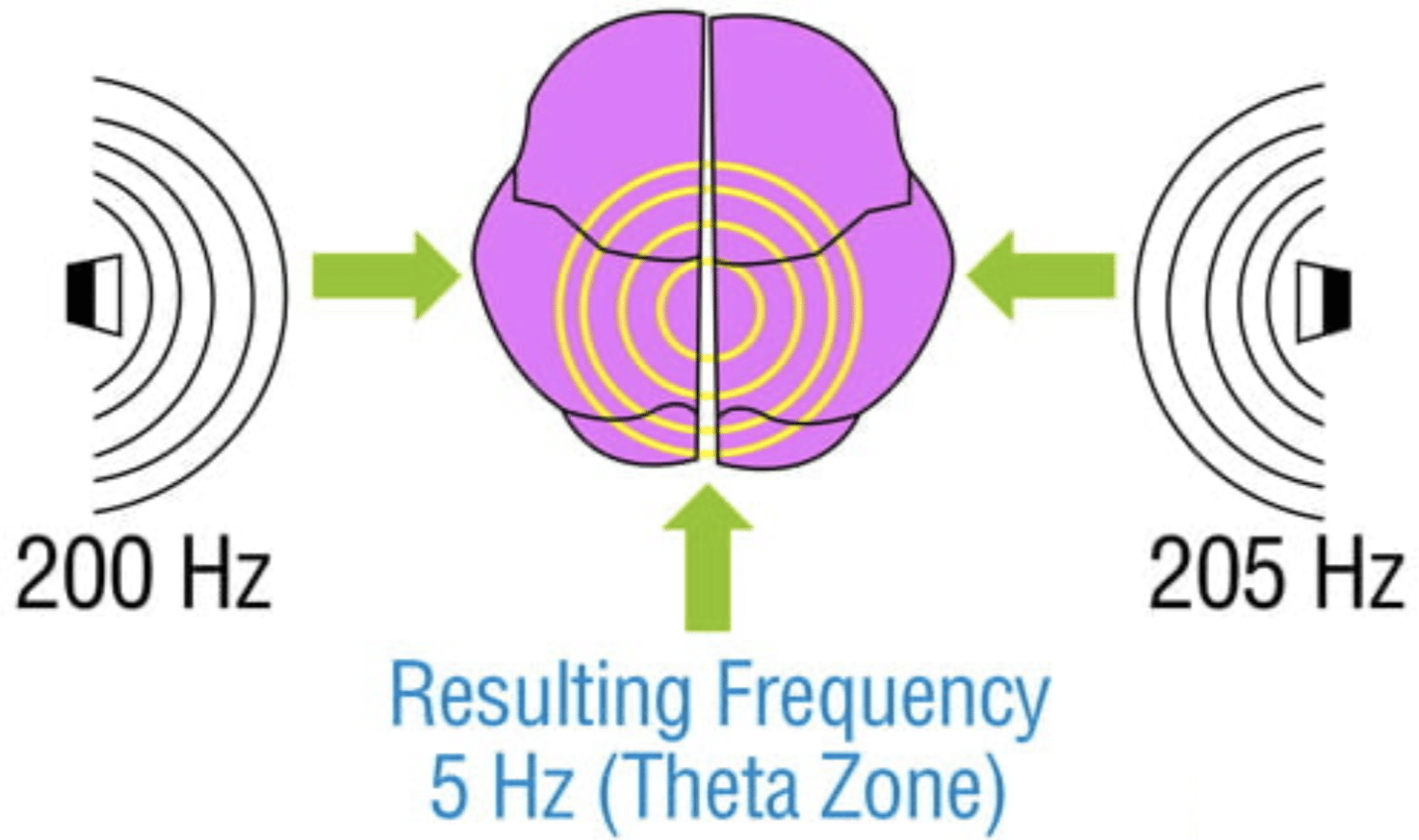
The impact of binaural sound on the human brain is profound.
Binaural audio not only provides a realistic auditory experience but also stimulates the brain in a way that enhances:
- Spatial awareness
- Emotional arousal
- Certain feelings and energies
When we listen to binaural recordings, our brain activity matches the natural processing of sounds in real life.
This leads to a more immersive and engaging listening experience.
For human hearing, binaural audio offers a more intuitive way of perceiving sound.
Unlike stereo audio, which can sometimes feel disjointed or artificial, binaural sound aligns closely with our innate auditory processing.
This alignment allows listeners to experience sound in a way that is both physically and psychologically more satisfying.
Binaural Audio in Music Production
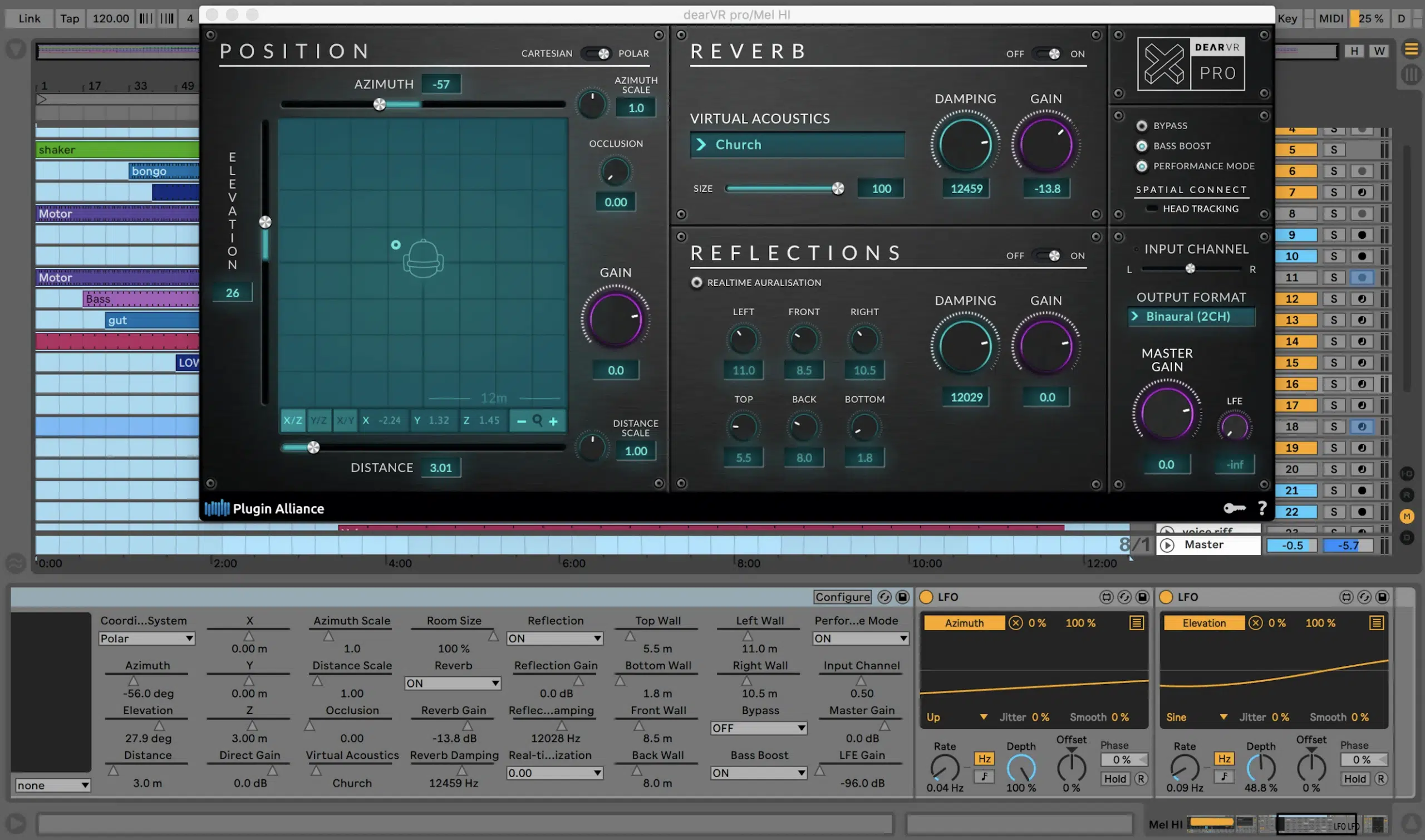
Binaural audio has revolutionized music production and sound design by offering an alternative to traditional stereo recording.
In a digital music production environment, binaural sound can be used to create immersive tracks that transport listeners to different spaces and times.
This is particularly effective for genres that rely heavily on:
- Atmospheric elements
- Spatial elements
The use of binaural recordings and the binaural effect in music production isn’t just about novelty 一 it’s about creating a deeper connection with the listener.
By incorporating binaural sound you can craft experiences that are more engaging and realistic.
This makes each track not just a song with interesting sounds, but an entire journey.
-
Binaural Sound in Virtual Reality and Gaming

In the realms of virtual reality and gaming, binaural audio plays a crucial role.
By using binaural sound, game developers and VR creators can enhance spatial awareness and make virtual environments in your own head more realistic.
This kind of audio places the player right at the center of the action; heightening the overall experience.
The application of binaural sound in VR and gaming goes beyond mere entertainment 一 it’s a tool for creating deeply engaging and emotionally resonant experiences.
The realistic soundscapes provided by binaural audio help in building more convincing and absorbing worlds.
Therefore, enhancing the user’s sense of presence within the virtual environment.
For digital producers working in VR and gaming, mastering binaural audio is key.
By understanding how binaural sound affects human hearing and brain activity, creators can produce songs that are not just seen and played but fully experienced.
It further emphasizes the power of sound to elevate the virtual experience.
-
Tips for Sound Engineers and Sound Designers on Binaural Recording
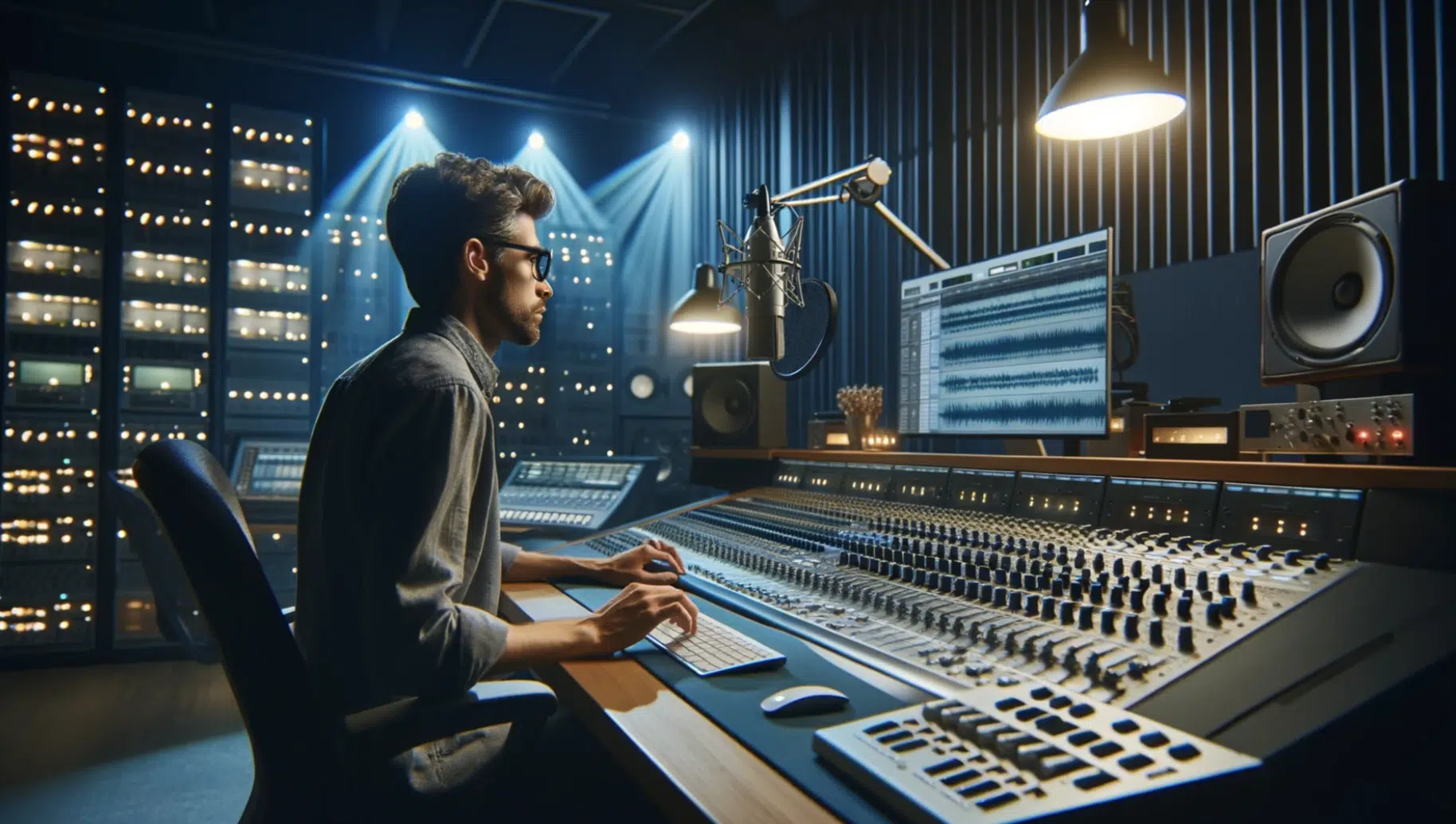
For sound engineers and sound designers, binaural audio presents an opportunity to explore new dimensions of sound recording and design.
Key tips include experimenting with:
- Different dummy head models
- Different microphone placements
This will capture the most natural and immersive binaural recordings.
A sound engineer should also focus on the nuances of sound environments, capturing not just the direct sound sources but also the ambient sound effects.
As well as the unique acoustic properties of different spaces.
This attention to detail is what makes binaural recordings so compelling and valuable in creating authentic audio experiences.
-
The Role of Audio Channels in Spatial Sound
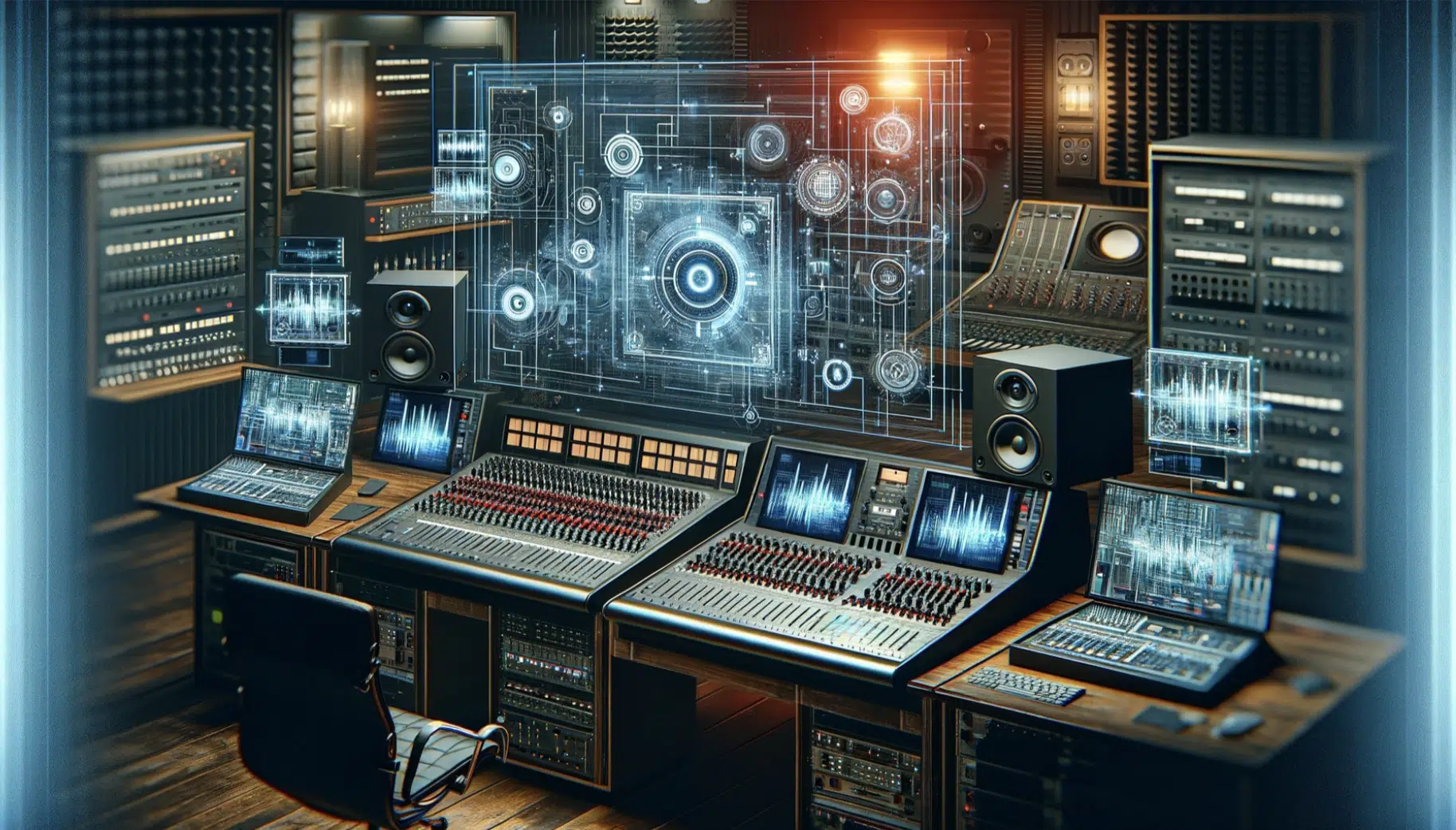
Audio channels play a critical role in spatial sound, especially in the context of binaural audio.
In a binaural recording, each audio channel is dedicated to one ear, creating a stereo effect that is more nuanced and realistic.
This setup allows for a precise replication of how sound waves arrive at and interact with the ears (left and right ears) 一 enhancing the overall spatial perception.
The use of two audio channels in binaural audio differs significantly from surround sound systems, which often employ multiple channels.
While surround sound creates an enveloping audio environment, binaural audio focuses on the accuracy of sound placement.
As well as the naturalistic recreation of auditory experiences.
-
Comparing Binaural and Surround Sound Systems
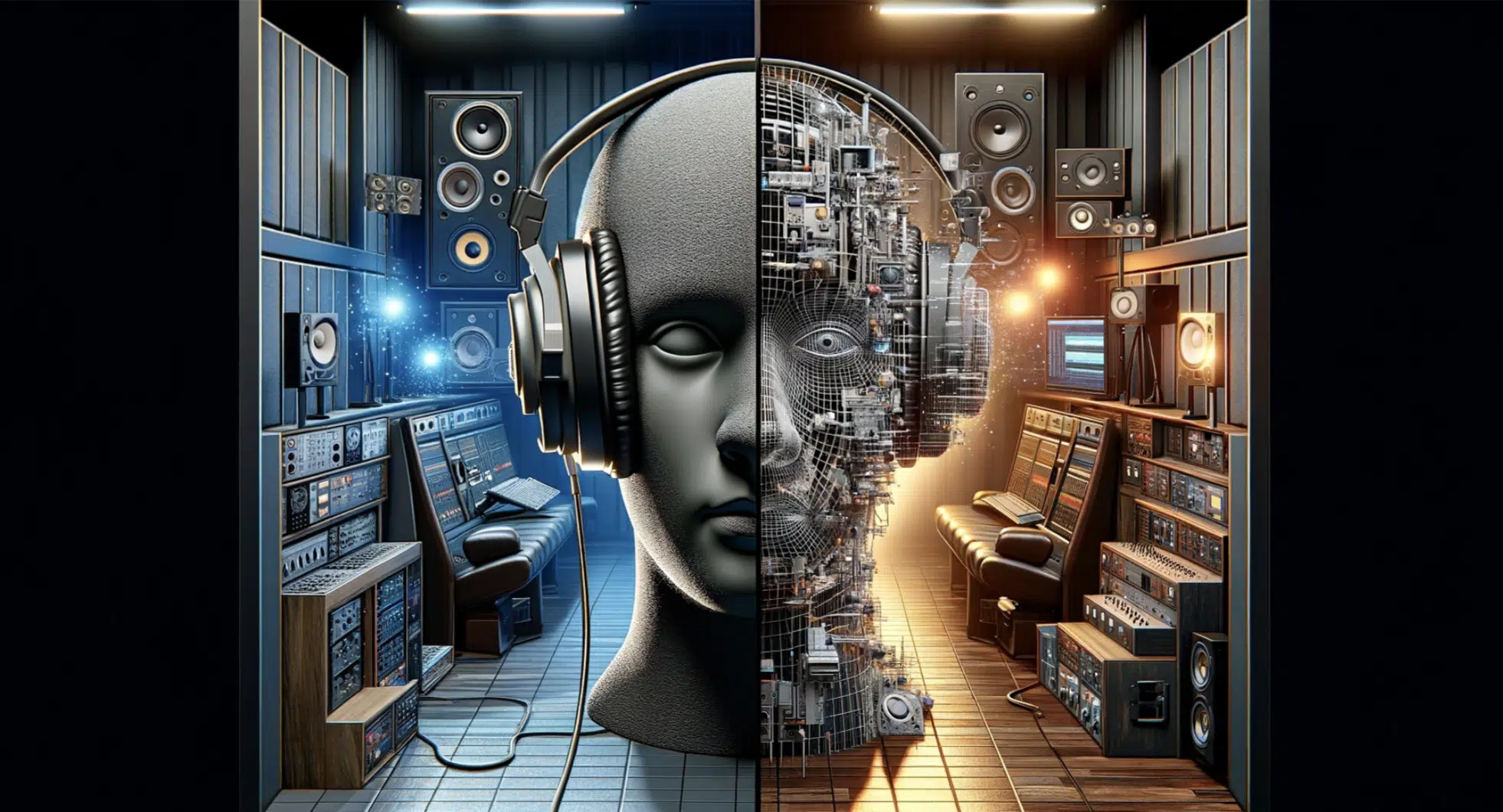
‘
Binaural audio and surround sound systems serve different purposes in audio production.
- Surround sound 一 Ideal for creating an immersive audio environment in a physical space.
- Binaural audio 一 More suited for headphone listening, where the goal is to mimic the natural human auditory experience.
For digital music producers, the choice between binaural and surround sound depends on the intended listening position/environment and the desired level of immersion.
Binaural audio is particularly effective for projects that require a high degree of spatial accuracy and intimacy, such as VR experiences or detailed soundscapes.
Techniques for Incorporating Binaural Effects

Incorporating binaural effects into audio productions requires a blend of technical skill and creative vision.
#1. Use of binaural beats to add a layer of depth and texture to tracks.
This not only enhances the listening experience but can also subtly influence the listener’s psychological state.
#2. The strategic placement of sound sources in the binaural soundscape.
By carefully considering how sound coming at everyone’s ears is perceived, can create a sense of movement and space.
NOTE: By using advanced techniques to capture sound, we can transform electrical signals into a binaural effect.
This will offer an immersive alternative to traditional methods like Dolby Atmos, making the audio and sound effects more dynamic and engaging.
So, taking the sound source (specifically, the ear canal) into account is very important when it comes to binaural simulation.
#3. Use binaural recording techniques, such as using an actual dummy head with a high-quality binaural microphone pair.
This can capture the subtle nuances of sound environments.
These binaural recordings can then be incorporated into music or sound designs to provide a highly realistic and immersive audio experience.
The Role of Binaural Audio in Human Auditory Experience (+ Psychological Effects)
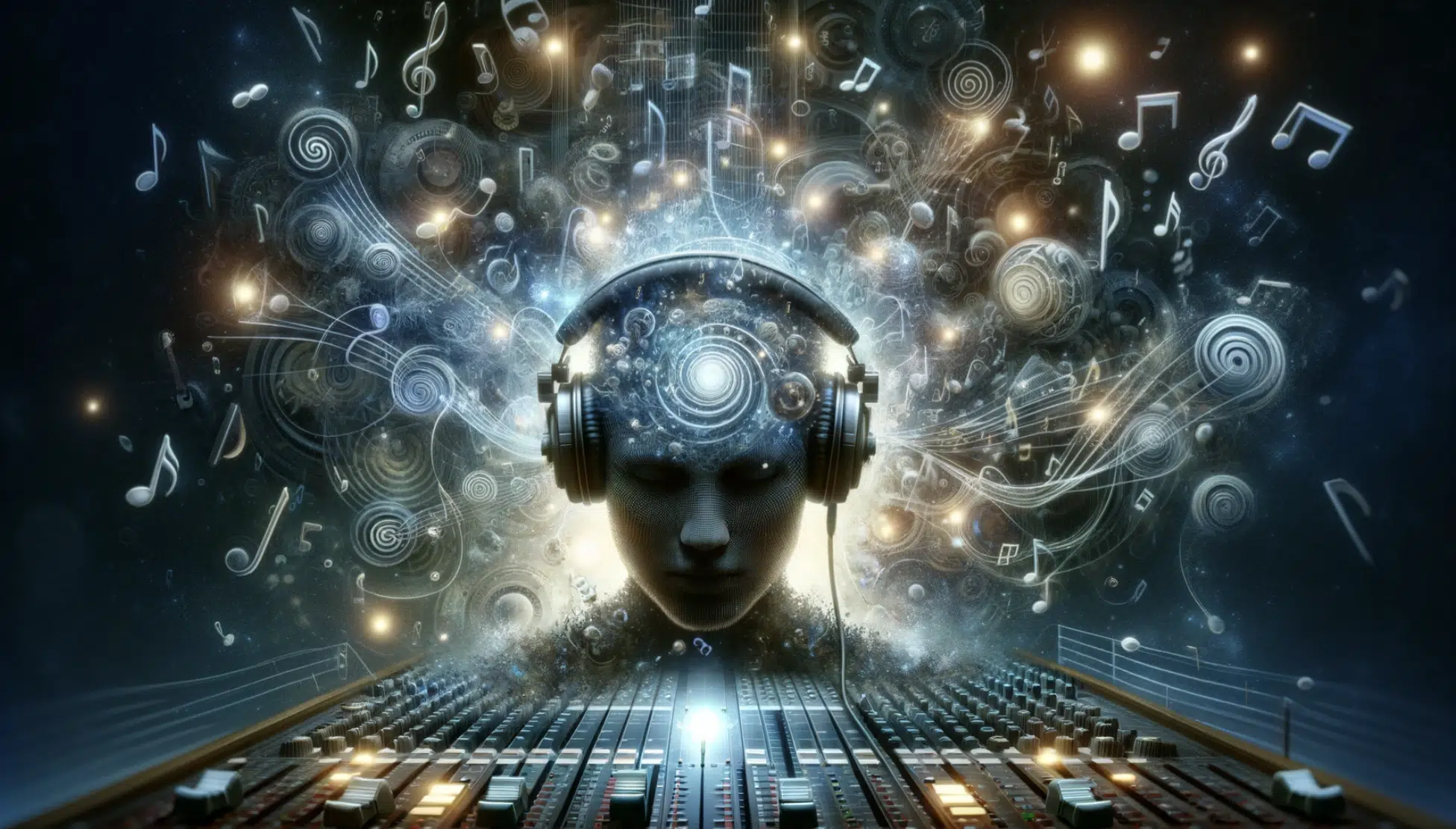
Binaural audio plays a significant role in shaping our auditory experience and has profound psychological effects.
The natural sound captured by binaural recordings aligns closely with the human auditory system, offering an experience that is intuitively understood by the brain.
This alignment not only enhances the realism of the sound but also can positively affect our mental state, evoking:
- Emotions
- Memories
- Fantasies
- Etc.
The psychological impact of binaural audio is notable, especially in how it can induce states of relaxation or heightened focus.
For instance, the use of binaural beats in music can influence brain activity and impulse responses, leading to reduced stress or improved concentration.
This aspect of binaural sound is particularly interesting for sound engineers and producers who aim to create audio that offers actual therapeutic benefits.
In terms of human auditory experience, binaural audio offers a more accurate representation of how we perceive sounds in the real world.
This enhanced realism can lead to a more immersive and emotionally engaging listening experience 一 the sound resonates more deeply with our natural auditory processing.
Bonus: Binaural Beats and Their Impact
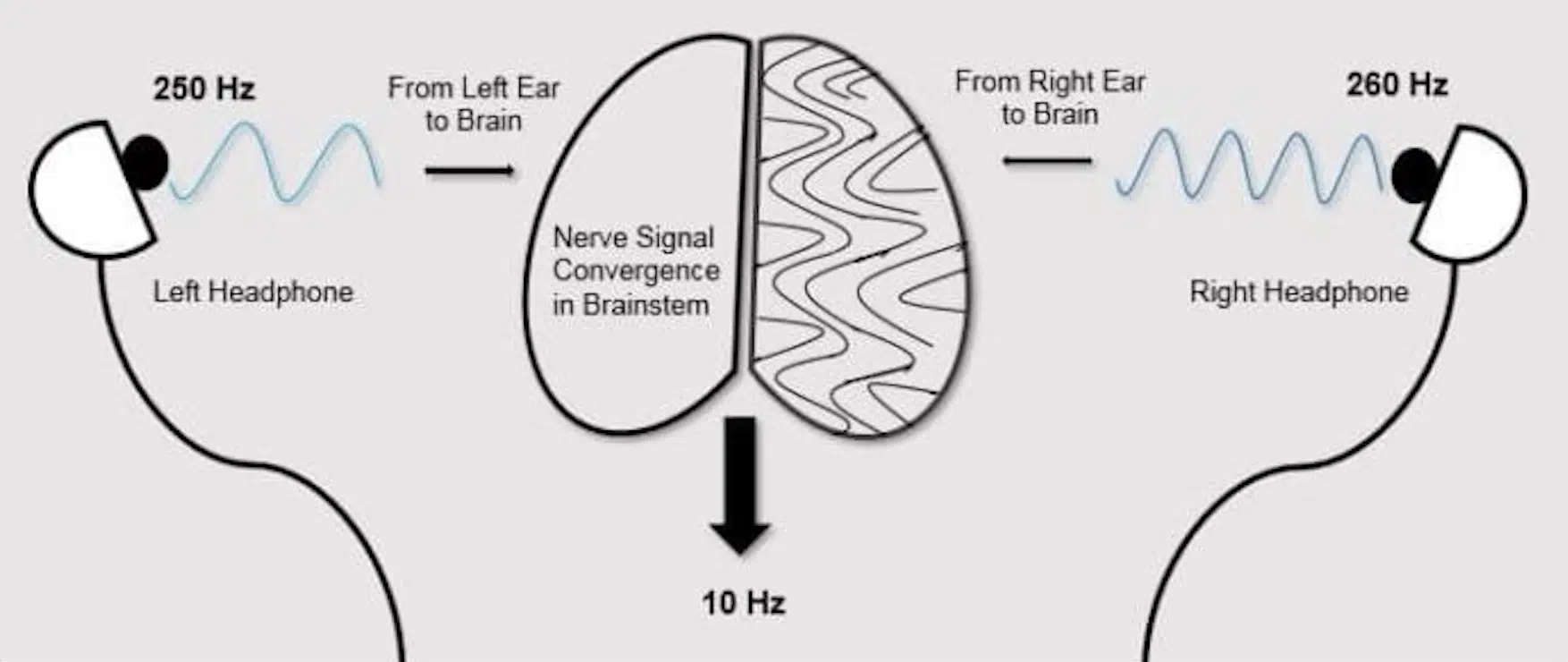
Binaural beats, a phenomenon occurring when tones of slightly different frequencies are played in each ear, have gained attention for their potential impact on brain activity.
By listening to a binaural beat through a pair of headphones, the brain perceives a third tone (the difference between the two frequencies).
It’s said to influence brainwave patterns and enhance EEG power.
The use of binaural beats extends beyond just an intriguing auditory experience.
Some studies suggest that listening to these beats can lead to:
- Increased focus
- Relaxation (making it a great sleeping aid)
- The altered states of consciousness
In music production, the incorporation of binaural beats can add a unique layer to compositions, influencing the listener’s emotional and psychological state.
Digital music producers can use these beats creatively to produce soundscapes that not only entertain but also have the potential to improve the listener’s mood.
Or even concentration, which will add depth to the binaural audio experience.
What is Binaural Audio? Final Thoughts
Binaural audio, as we’ve discovered, is not just a technological advancement but a gateway to a new realm of auditory experiences.
It’s a thrilling innovation that allows music producers to create soundscapes with unparalleled depth and emotional resonance, enhancing the listener’s engagement and immersion.
So, knowing all about can give you a leg up over your competition and add a unique edge to your tracks.
This makes this legendary Ambient & Downtempo MIDI Chord Collection an excellent complement when trying to understand what is binaural audio.
This collection, rich in MIDI chords and progressions, offers an invaluable resource for creating the atmospheric and immersive soundscapes that binaural audio is known for.
By integrating these MIDI resources into your production process, you can enhance the depth and emotional resonance of your music.
It perfectly aligns with the sophisticated auditory experiences that binaural audio exudes.
So, keep experimenting and staying ahead of the curve, so you can bring more legendary music to the world.
Until next time…







Leave a Reply
You must belogged in to post a comment.